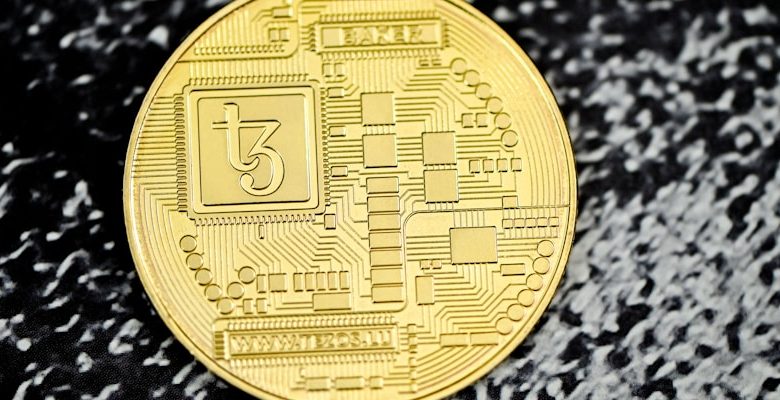The Integration of Blockchain in Everyday Appliances (IoT)

- Understanding the Basics of Blockchain Technology
- Exploring the Potential of Blockchain in IoT Devices
- Benefits and Challenges of Integrating Blockchain in Everyday Appliances
- Security and Privacy Implications of Blockchain in Connected Devices
- Future Trends in the Integration of Blockchain Technology in IoT
- Case Studies of Successful Implementation of Blockchain in Smart Home Devices
Understanding the Basics of Blockchain Technology
Blockchain technology is a decentralized and distributed ledger system that securely records transactions across multiple computers in a network. Each transaction is added to a block, which is then linked to the previous block, forming a chain of blocks – hence the name blockchain. This technology allows for the secure and transparent transfer of data without the need for intermediaries.
One of the key features of blockchain technology is its immutability. Once a block is added to the chain, it cannot be altered or deleted without the consensus of the network. This makes blockchain ideal for applications where data integrity and security are paramount, such as in the Internet of Things (IoT).
By integrating blockchain technology into everyday appliances connected to the IoT, manufacturers can ensure that data transmitted between devices remains secure and tamper-proof. For example, smart refrigerators could use blockchain to securely track food expiration dates and automatically reorder groceries when needed. Smart thermostats could use blockchain to securely adjust temperature settings based on occupancy patterns.
Overall, understanding the basics of blockchain technology is essential for grasping how it can revolutionize the way we interact with everyday appliances in the IoT. Its decentralized nature, immutability, and transparency make it a powerful tool for ensuring data security and integrity in an increasingly connected world.
Exploring the Potential of Blockchain in IoT Devices
Exploring the potential of blockchain technology in Internet of Things (IoT) devices opens up a world of possibilities for enhancing security, transparency, and efficiency in everyday appliances. By integrating blockchain into IoT devices, users can experience increased data protection, improved trust in device communication, and streamlined processes.
One of the key benefits of incorporating blockchain in IoT devices is the ability to create a decentralized system where data is securely stored and shared across a network of devices. This distributed ledger technology ensures that data is tamper-proof and transparent, reducing the risk of data breaches and unauthorized access.
Furthermore, blockchain can facilitate secure transactions between IoT devices without the need for intermediaries. This peer-to-peer communication can streamline processes, reduce costs, and increase the overall efficiency of IoT devices. By automating transactions through smart contracts, devices can interact autonomously based on predefined conditions.
Overall, the integration of blockchain in IoT devices has the potential to revolutionize the way we interact with everyday appliances, providing a more secure and efficient ecosystem for connected devices. As the technology continues to evolve, we can expect to see even more innovative use cases for blockchain in IoT devices in the future.
Benefits and Challenges of Integrating Blockchain in Everyday Appliances
Integrating blockchain technology in everyday appliances offers a multitude of benefits as well as challenges. Let’s delve into the advantages and drawbacks of utilizing blockchain in IoT devices.
- Benefits of integrating blockchain:
- Enhanced security: Blockchain’s decentralized nature makes it resistant to tampering and hacking, ensuring data integrity and confidentiality.
- Improved transparency: Transactions recorded on the blockchain are transparent and verifiable, fostering trust among users.
- Streamlined processes: Smart contracts can automate tasks, reducing the need for intermediaries and increasing efficiency.
- Increased data accuracy: With blockchain, data is stored in a secure and immutable ledger, minimizing errors and discrepancies.
- Challenges of integrating blockchain:
- Scalability issues: As the number of transactions increases, blockchain networks may face scalability challenges, impacting performance.
- Complexity: Implementing blockchain in everyday appliances requires specialized knowledge and expertise, which can be a barrier for adoption.
- Cost: Building and maintaining blockchain infrastructure can be costly, especially for small businesses or individuals.
- Regulatory concerns: The evolving regulatory landscape surrounding blockchain technology poses uncertainties and compliance challenges.
In conclusion, while integrating blockchain in everyday appliances offers significant advantages in terms of security, transparency, efficiency, and data accuracy, it also comes with challenges such as scalability issues, complexity, cost, and regulatory concerns. Organizations and individuals looking to leverage blockchain in IoT devices must carefully weigh these factors to make informed decisions.
Security and Privacy Implications of Blockchain in Connected Devices
When it comes to the integration of blockchain technology in everyday appliances, one must consider the security and privacy implications that come with it. Blockchain offers a decentralized and secure way of storing data, making it an attractive option for connected devices in the Internet of Things (IoT) ecosystem.
One of the main advantages of using blockchain in connected devices is its ability to provide a tamper-proof ledger of transactions. This means that data stored on the blockchain is secure and cannot be easily altered or manipulated. This feature is especially important in IoT devices, where sensitive information such as personal data or payment details may be involved.
Furthermore, blockchain technology uses advanced cryptographic techniques to ensure the privacy of data stored on the network. Each transaction is securely encrypted and linked to the previous transaction, making it extremely difficult for unauthorized parties to access or decipher the information. This level of security is crucial in ensuring the confidentiality of data transmitted between connected devices.
However, despite its many benefits, blockchain technology is not without its challenges when it comes to security and privacy. One of the main concerns is the potential for vulnerabilities in the smart contracts that govern transactions on the blockchain. These smart contracts are essentially self-executing contracts with the terms of the agreement directly written into the code. If a vulnerability is exploited, it could lead to unauthorized access or manipulation of data.
In conclusion, while blockchain technology offers a secure and decentralized solution for connected devices in the IoT ecosystem, it is important to address the security and privacy implications that come with it. By implementing robust security measures and regularly updating the network to patch any vulnerabilities, we can ensure that blockchain remains a safe and reliable option for everyday appliances.
Future Trends in the Integration of Blockchain Technology in IoT
As technology continues to advance, the integration of blockchain technology in IoT devices is expected to become more prevalent in the future. This integration offers numerous benefits, including increased security, improved transparency, and enhanced efficiency.
One of the future trends in the integration of blockchain technology in IoT is the development of smart contracts. These self-executing contracts will allow devices to autonomously interact with each other, enabling seamless transactions and data sharing without the need for human intervention.
Another trend is the use of blockchain technology to create decentralized IoT networks. By decentralizing data storage and processing, these networks can improve scalability and reliability while reducing the risk of single points of failure.
Furthermore, the combination of blockchain and IoT is expected to revolutionize supply chain management. By creating an immutable record of every transaction and movement of goods, blockchain technology can enhance traceability, authenticity, and accountability throughout the supply chain.
In conclusion, the integration of blockchain technology in IoT devices is poised to shape the future of technology in various industries. By leveraging the benefits of blockchain, such as security, transparency, and efficiency, businesses can unlock new opportunities for innovation and growth.
Case Studies of Successful Implementation of Blockchain in Smart Home Devices
Several case studies have demonstrated the successful implementation of blockchain technology in smart home devices. These examples showcase how blockchain enhances security, privacy, and efficiency in everyday appliances connected to the Internet of Things (IoT).
- One notable case study involves the integration of blockchain in smart locks. By utilizing blockchain technology, smart locks can securely store access logs and manage permissions without relying on a central authority. This decentralized approach enhances the security of smart homes and prevents unauthorized access.
- Another successful implementation of blockchain is seen in smart thermostats. Blockchain allows these devices to autonomously adjust temperature settings based on user preferences recorded on the blockchain. This not only increases energy efficiency but also ensures data privacy by eliminating the need for a third-party data broker.
- Smart lighting systems have also benefited from blockchain integration. By leveraging blockchain technology, smart light bulbs can communicate with each other securely and autonomously. This decentralized communication network enhances the reliability and efficiency of smart lighting in homes.
Overall, these case studies highlight the diverse applications of blockchain in smart home devices, ranging from security enhancements to data privacy improvements. By incorporating blockchain technology into everyday appliances, the IoT ecosystem becomes more resilient and user-friendly.



